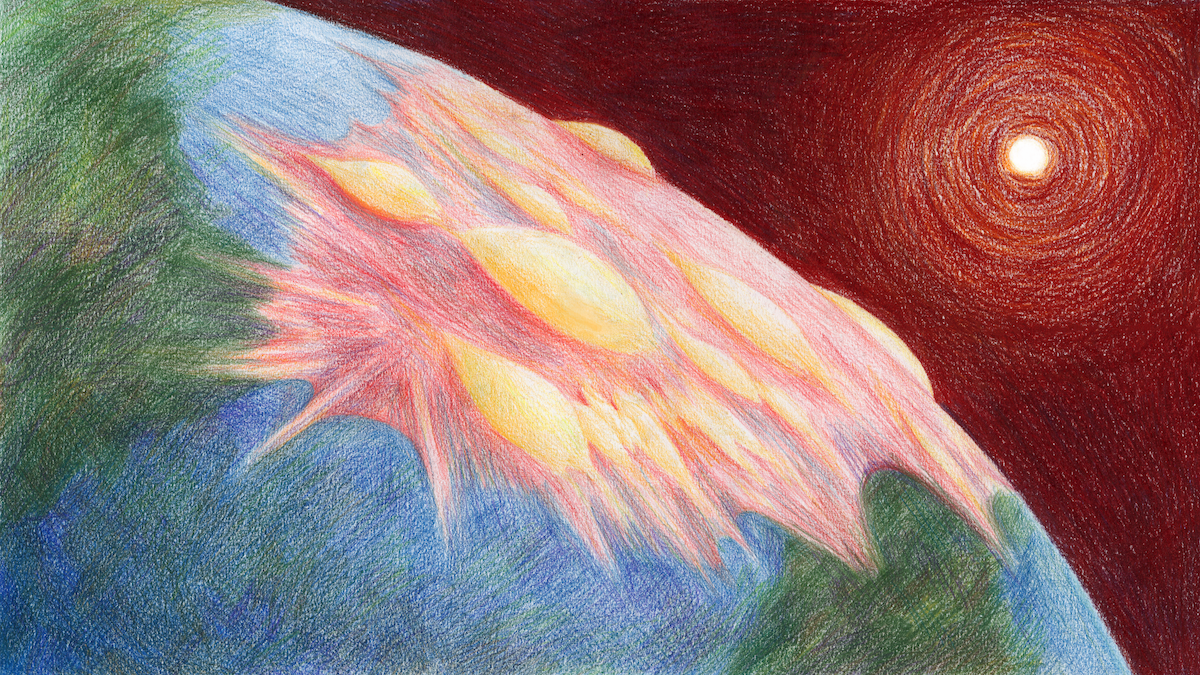 Earth & Space
Earth & Space
The impact of climate change on marine life in ocean depths
Lessons from past warm periods in the Earth's history reveal that climate and atmospheric changes could lead to more intense seasonal rainfall, disturbing immense sedimentary systems, from mountain tops to ocean floors. Great amounts of transported clays are likely to cause muddy waters in the depths of oceans, making them uninhabitable for most marine species.

Historically, the Earth has known periods that were both colder and warmer than today. A better understanding of past climate dynamics will improve the modelling of upcoming changes. The Paleocene-Eocene Thermal Maximum (PETM) is one of the greatest (+5-8°C) and fastest (5,000 years) climate warming event in the recent Earth's history that occurred 56 million years ago. It would have been triggered by a high concentration of two greenhouse gases, the famous CO2 (carbon dioxide) and methane. The origin of these emissions is still debated, and several phenomena have been evoked to explain it: a bustling volcanism in the North Atlantic, the release of methane hydrates trapped within the permafrost through its sudden melting, and a meteorite impact.
Read also the press release from the University of Geneva
Original Article:
Edited by:
Arshia Ruina , Senior Scientific Editor
We thought you might like
Ocean acidification and its effects on coral reef growth
Jul 8, 2016 in Earth & Space | 3.5 min read by Rebecca AlbrightResetting nature’s clock: shifting seasons and species relationships
Sep 14, 2016 in Earth & Space | 3.5 min read by Stephen Thackeray , Sarah BurtheThe silent battle of young corals against ocean acidification
Oct 19, 2016 in Earth & Space | 4 min read by Taryn FosterFor polar bears the cost of living is rising
Mar 13, 2018 in Earth & Space | 4 min read by George DurnerMore from Earth & Space
Volcanic Ash: A Nutrient Boost for Reef-Building Corals
Sep 18, 2024 in Earth & Space | 4 min read by Frank Förster , Tom SheldrakeAmmonia Energy: A Call for Environmental Awareness
Aug 29, 2024 in Earth & Space | 3.5 min read by Matteo Bertagni , Robert Socolow , Amilcare PorporatoLikely increase in coral thermal tolerance at a Pacific archipelago
Dec 29, 2023 in Earth & Space | 3 min read by Liam LachsEarth’s large lakes are shrinking
Dec 27, 2023 in Earth & Space | 3 min read by Fangfang Yao , Ben Livneh , Balaji RajagopalanGas in distant galaxies: mixed or matched?
Nov 22, 2023 in Earth & Space | 3 min read by Tanita Ramburuth-HurtEditor's picks
Trending now
Popular topics


